My son is starting to ask all kinds of questions about the world around us. He recently brought home this spikey looking nut from the school playground, asking what it was and wondering what might be inside. So we started a Science Observation Journal, a place where we could collect and record all kinds of information about our findings. Time to investigate!
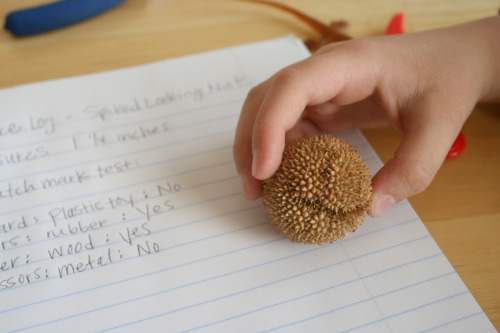
Supplies for Science Observation:
- notebook and pencil
- tools: pliers, scissors, hammer, fork, water in a cup, ruler
* All tools, unless child-friendly, need to be under adult supervision *
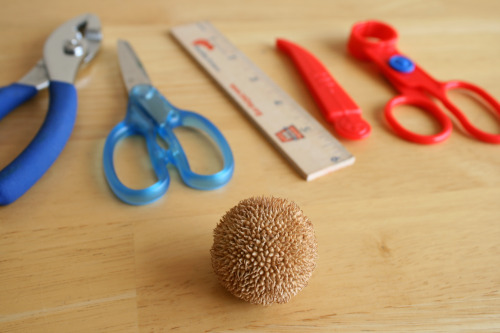
We got out our notebook and I wrote down different questions and observations that we could ask. My son helped dictate to me what he wanted to find out about this “spiked looking nut” (that’s what we were calling it). How big/long was it? Did it scratch anything?
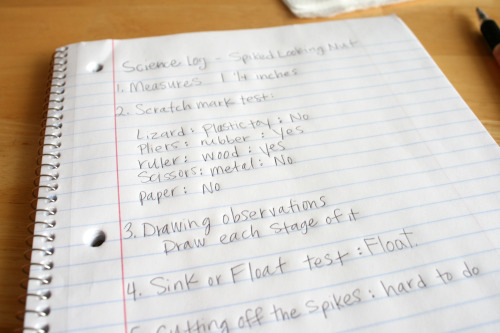
We experimented on it with all kinds of different tests as well. We measured it, looked to see if it could float, drew what it looked like, and gave it our own touch test.
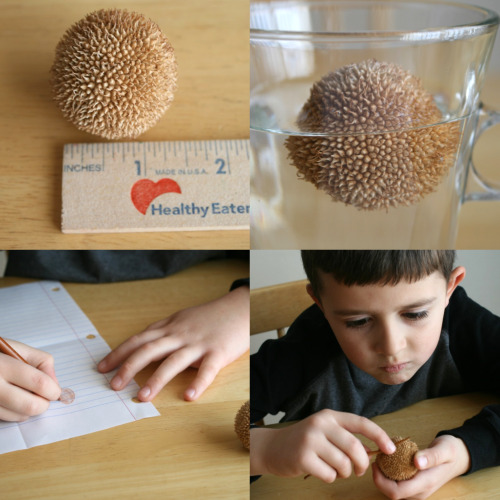
We wanted to try and see what was inside. We took a lot of guesses as to what there might be. Then we did our best to use tools to get to the center. We used a fork and a nut cracker.
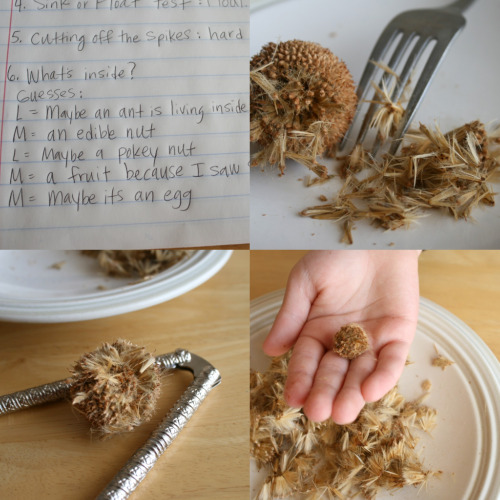
And finally a hammer (that I was careful to use). Here is what we found inside: Nothing!
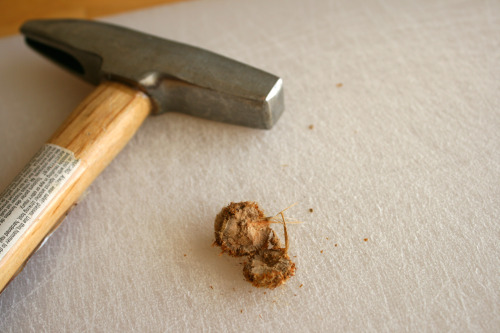
From all of our observations and findings, we concluded that it was simply a seed. We went back to the source and found many of these spikey seeds hanging on a tree nearby his school. We even googled it to see what other information we could find. There wasn’t a whole lot out there, but it was still fun to give it a try and see what we could come up with.
We’ll be doing a lot more observations, as I think my son has caught the science bug!
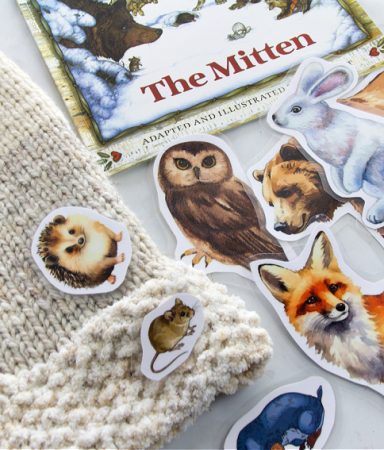
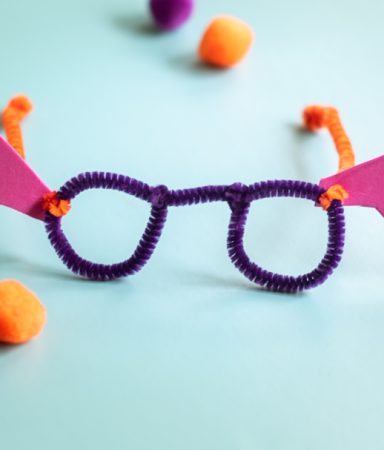
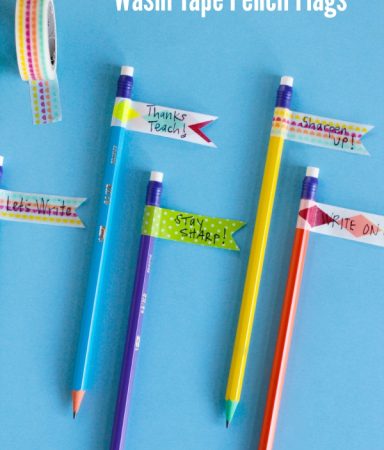
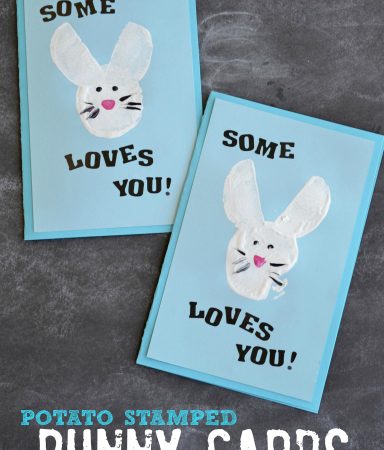

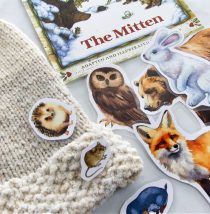
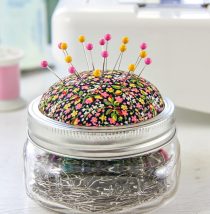
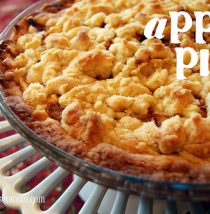
Ooooohhhh! I began itching the second I saw your first picture! In elementary school, if you wanted to torture a classmate, you puled one of these apart and put some of the fuzz down their shirt. Your back itched sooo bad the the rest of the day until you could get home to shower and change!
Yeah, I had it happen a time or two.
Just the other day I was showing my daughter all the seeds that had dropped from a tree in our neighborhood. Some were still fully intact, but many were falling apart, and some had just the center left. I gave her the warning not to touch them and definitely not to get them on her hands or skin!
The trees are absolutely beautiful though, with their colorful bark!
What a fun experiment!
Super fun! I love how hard he is concentrating!
I was almost expecting it to uncurl itself into a hedgehog! Wouldn’t THAT have been a surprise!
When I was a kid, I found a mystery nut (at the time) and my mom and I didn’t know what it was. So we planted it together in the backyard. Now my parents have a huge oak tree a wee bit too close to their house. They didn’t move it when they should have, but it’s doing fine. I hope their house foundation is okay too ;)
Last summer we found a fruit on our sumac tree’s in the backyard. Never seen that before! My kids and I thought it was really neat. Apparently, sumac and mango tree’s are somewhat related. That’s what the fruit looked like – a small mango. They’re part of the same family, as are cashews and pistachio’s. Go figure.
I love this post! What a great way to encourage higher level thinking! All of the predicting and questions and exploring- awesome. I’ve done nature journels with my kiddos when they were small, but I like your take on it with all of the questions, etc. first before research. I think they are ready for this type of thinking and exploring- thank you so much for sharing.
Here is my post from last year- if interested.
How to Create a Nature Journal
http://raisingcreativeandcuriouskids.blogspot.com/2009/04/how-to-create-nature-journal.html
Have a great day!
Jen
Brilliant. And, if you keep his science journals with dates he can look back later and trace his future career back to when he was interested at the age of x in y. And also Z.
I love that you are doing this, but then, I am a science teacher :)
Another thing that is good to include in a science journal is a drawing or picture if you can easily add one. It helps when you go back (maybe at the end of summer) and see the variety of things you’ve looked at. I’ve found that sometimes the kids forget which one is which if they can’t see it.
Love this idea. The sycamore seed pods are among my favorite. Sometimes they dangle like earrings.
this is fantastic! i’ve always loved the idea of incorporating science with language and writing!
I love your idea of a science observation notebook!! My son would love that!! What a great learning activity that is fun too! I will definitely be implementing this with my son!! We have been doing a lot of experiments, around balance and objects, but I haven’t documented them. This will be a great addition to our science adventures!
Terrific! He is building his observation skills and curiosity as well as building memories to last a lifetime!
This is such a wonderful educational activity. My husband would do it with our son. It brings us closer to each other as a family.
My son is not quite 4 and we already do this. Not as in depth, but he loves learning and experimenting. I am sure he will have a journal as soon as he learns to write. :-) It look like you had a lot of fun!
What fun!
In case you haven’t deduced it yet, that is a seed pod from a sycamore tree.
I love this! I love taking everyday things and making them educational. I love that you subjected that seed to so many tests! I would have definitely cracked it open, but probably wouldn’t think to do a scratch test or sink/float test.
My daughter (6) will be all over this. We’ll do it for sure this summer!
Thanks for sharing your ideas!
LOVE this idea!